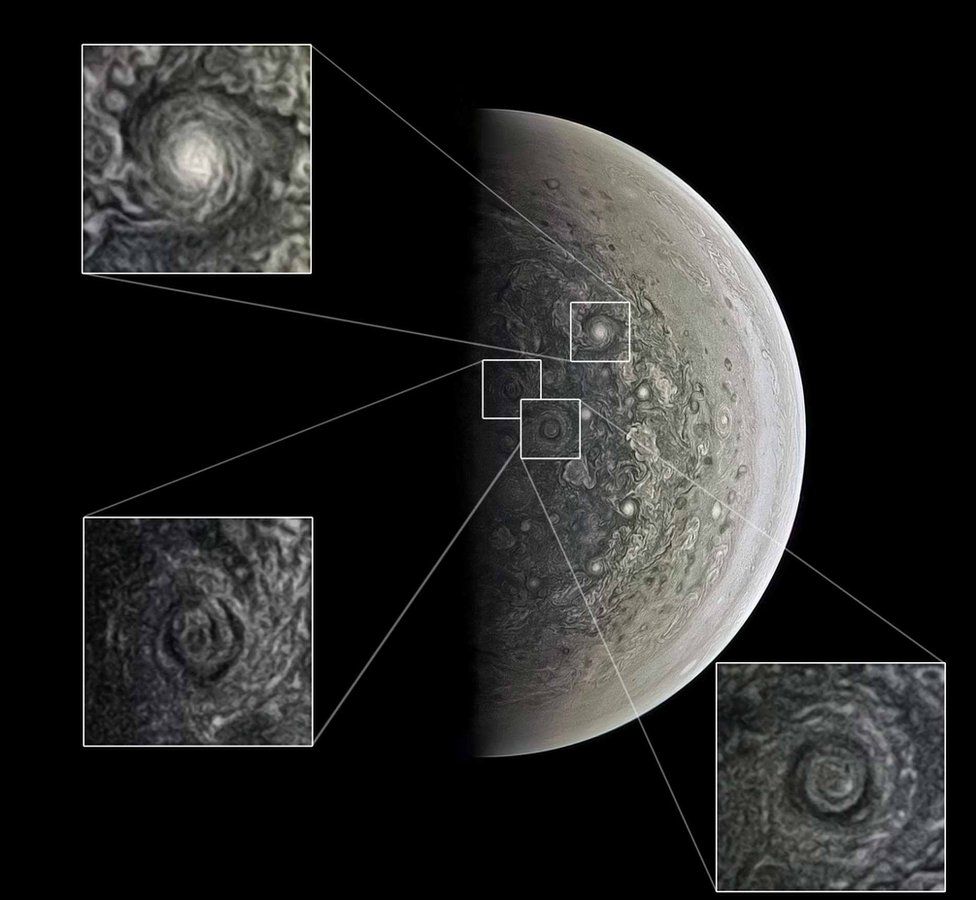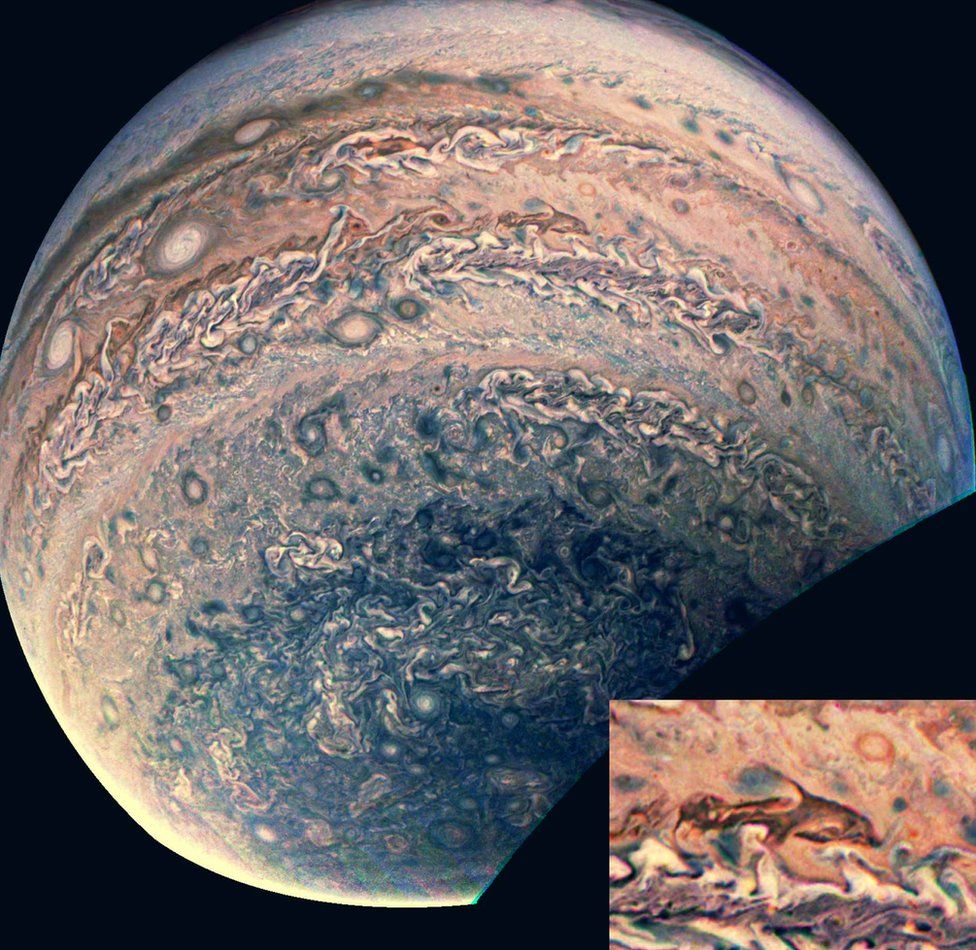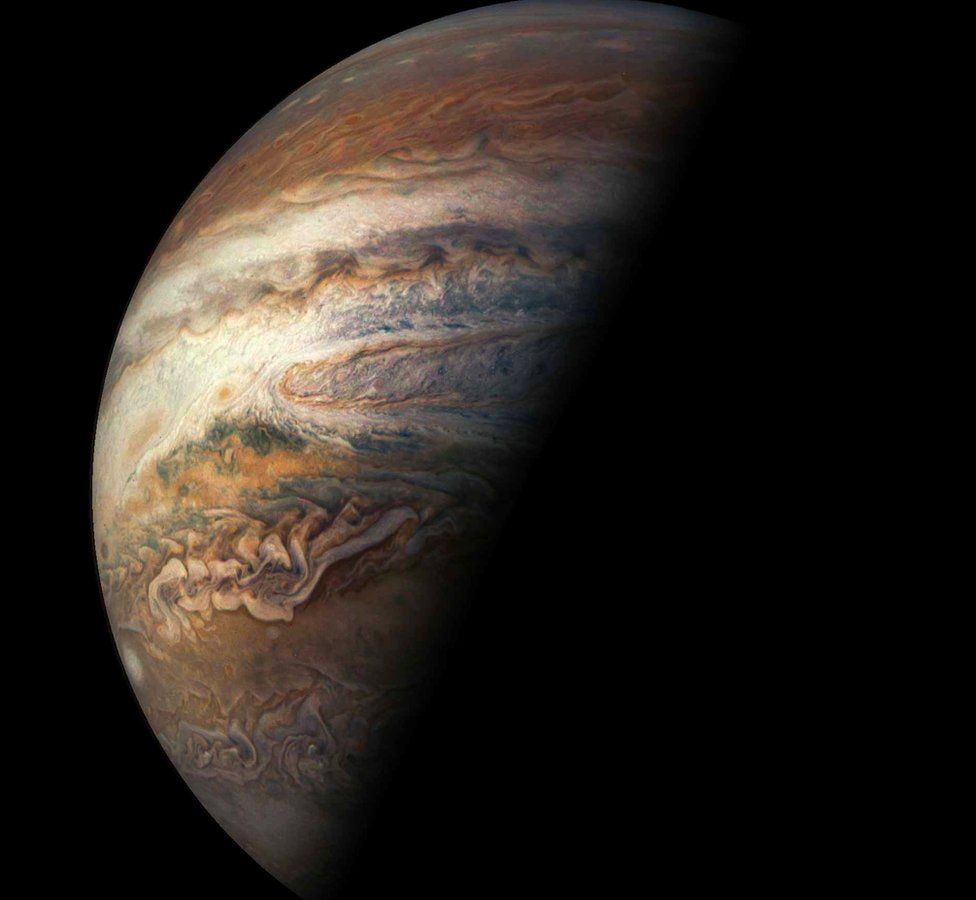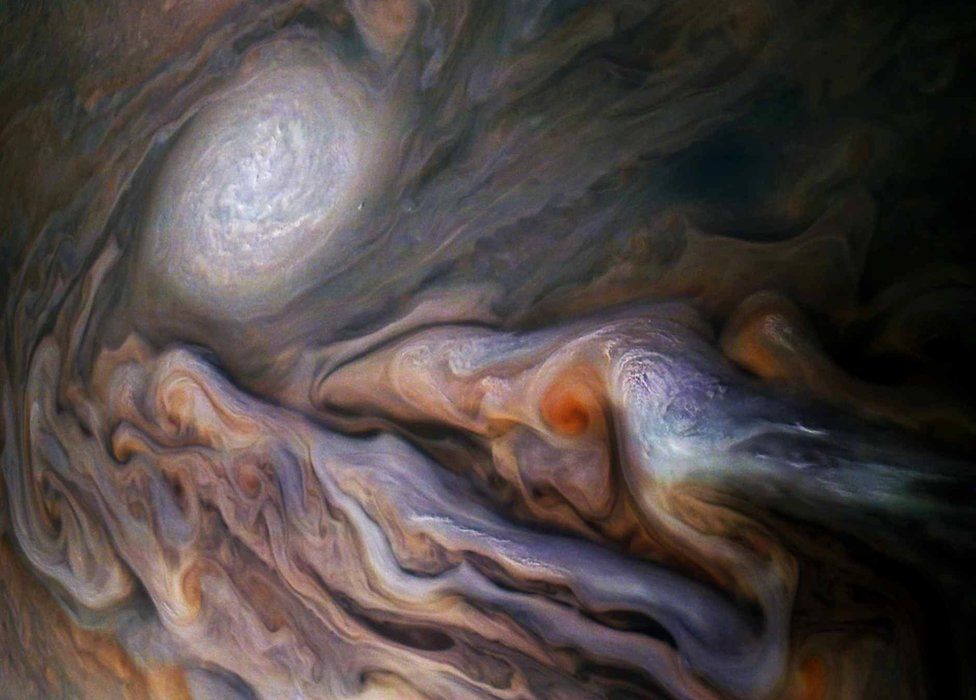Massive Polar Storms on Jupiter Captured by Juno (Photos)
Nasa’s Jupiter mission Juno reveals giant polar storms
BBC
 NASA / SWRI / MSSS / GERALD EICHSTÄDT / SEÁN DORANPeople have downloaded the raw images of Jupiter and processed them, often revealing new details of its surface
NASA / SWRI / MSSS / GERALD EICHSTÄDT / SEÁN DORANPeople have downloaded the raw images of Jupiter and processed them, often revealing new details of its surface
Nasa’s Juno mission to the gas giant Jupiter has reached its halfway mark and has revealed new views of cyclones at the poles.
As it orbits the planet every 53 days – Juno performs a science-gathering dive, speeding from pole to pole.
Its sensors take measurements of the composition of the planet, in an effort to decipher how the largest world in our Solar System formed.
Mapping the magnetic and gravity fields should also expose Jupiter’s structure.
 NASA/SWRI/MSSS/ROMAN TKACHENKOJunoCam has seen giant cyclones at the poles
NASA/SWRI/MSSS/ROMAN TKACHENKOJunoCam has seen giant cyclones at the poles
But images from JunoCam – a camera that was intended to capture images that could be shared with the public – has already given us some surprising insights.
Dr Candice Hansen, from the Planetary Science Institute in Arizona, is leading the JunoCam project, which she described as “our little outreach camera”. She presented some of the remarkable images from the camera – raw images downloaded and processed by members of the public – at the American Geophysical Union meeting here in Washington DC.

 MARSECDetailed images have revealed how one storm takes the shape of a dolphin
MARSECDetailed images have revealed how one storm takes the shape of a dolphin
“When we made our first pass over the poles, we knew we were seeing a territory on Jupiter we had never seen before,” said Prof Hansen.
“What we did not expect was that we would see these orderly polygons of cyclones; huge storms – twice the size of Texas.
“We thought, wow – that’s spectacular.”
And 16 passes later, she added, those orderly arrangements of giant storms are still there.
 ALEJANDRO DIAZ DThe Juno mission has set out to uncover Jupiter’s deep structure and the secrets of its formation
ALEJANDRO DIAZ DThe Juno mission has set out to uncover Jupiter’s deep structure and the secrets of its formation
These “pretty pictures” are starting to teach scientists about how the largest planet in the Solar System formed and evolved.
“The objective for the Juno mission is to study the interior structure of Jupiter and how that structure expresses itself out on the cloud tops. That’s the kind of connection we’re trying to make. But we’re not there yet.”
 NASA / SWRI / MSSS / GERALD EICHSTÄDT / SEÁN DORAN
NASA / SWRI / MSSS / GERALD EICHSTÄDT / SEÁN DORAN
The dynamics of the surface could reveal Jupiter’s deeper structure
Jack Connerney, Juno deputy principal investigator from the Space Research Corporation in Annapolis, Maryland, said that the second half of the mission would provide an even more detailed view of “what makes the whole of Jupiter tick”.
